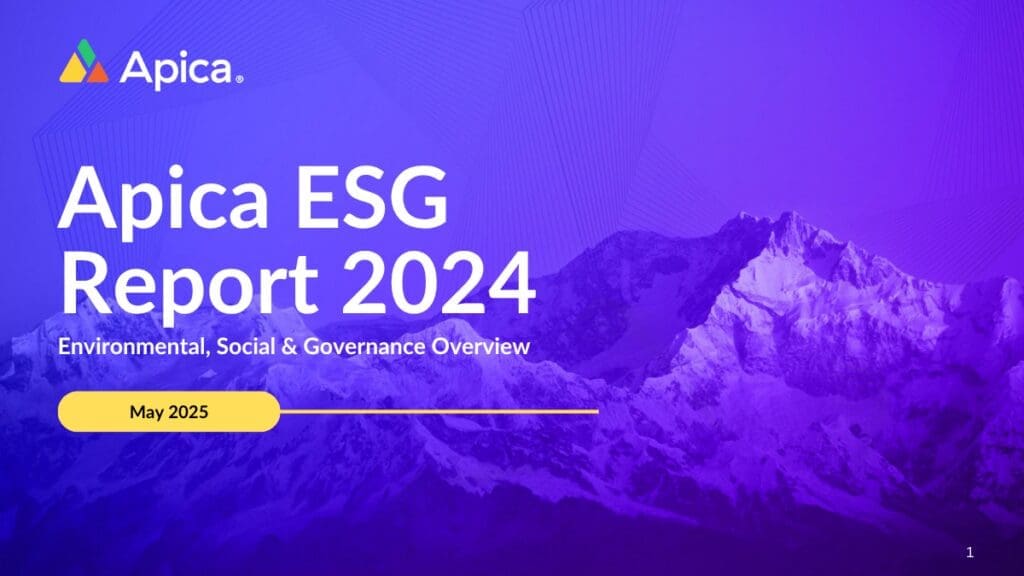Data scientists and analysts are heroes and MVPs today, with the ability to alter your organization with near real-time analysis and eerily accurate predictions that enhance decision making, minimize risks, and increase revenue. Companies have invested millions of dollars in cutting-edge data science platforms that are packed with features to help their data scientists and expedite their transformation into data-driven businesses. So, why do so many data scientists continue to grumble about the difficulties they face in their jobs? They all, ironically, revolve around the same thing: data. Data scientists believe they come across the following issues:
• Finding the correct data sets is difficult.
• Inaccurate training data for machine learning models.
Observability is a fast-growing notion in the Ops world that has exploded in popularity in recent years, thanks to firms like Datadog, Splunk, New Relic, and Sumo Logic. It’s referred to as Monitoring 2.0, but it’s so much more. (Lost between observability and monitoring? Know the difference.) Engineers can use observability to figure out if a system is working as it should be based on a thorough grasp of its internal state and the environment.
What is Data Observability?
Data observability is the ability to fully understand an organization’s data ecosystem. Applying DevOps and observability best practices to data pipelines eliminates data downtime. An automated data observability system such as DevOps can detect and assess data quality or discoverability issues, leading to healthier pipelines, more productive teams, and happier clients.
- Freshness
Freshness examines how current your data tables are, as well as the frequency with which they are updated. When it comes to decision-making, freshness is especially crucial; after all, old data is practically associated with wasted time and money.
- Distribution
A function of your data’s possible values, distribution tells you if your data is within an acceptable range. Data distribution allows you to determine whether or not your tables can be trusted depending on the data you have.
- Volume
Volume is a metric that measures the completeness of your data tables and provides information about the health of your data sources. You should be aware if 200 million rows suddenly reduce to 5 million.
- Schema
Changes in the organization of your data, or schema, are frequently indicative of broken data. Understanding the health of your data ecosystem requires tracking who makes changes to these tables and when.
- Lineage
When data goes missing, the first question is always, “Where did it go?” Data lineage identifies which upstream sources and downstream users have been impacted., as well as which teams are producing the data and who is accessing it. Good lineage also collects data-related information (also known as metadata) that pertains to governance, business, and technical rules for specific data tables, acting as a single source of truth for all users.
5 ways Data Observability can solve complex Data problems
These 5 ways only scratch the surface of how observability can assist your team to enhance data quality at scale and gain confidence in your data.
Comprehensive coverage, from data ingestion to business intelligence.
To properly comprehend data health, Active coverage is required. Modern data environments are extremely complicated, with data constantly streaming in from several sources, many of which are “external” and might alter without warning. That data is then sent to a data storage component (such as a data warehouse, data lake, or even a data lakehouse), where it is consumed by a stakeholder. During this time, data is often converted multiple times.
No matter how good your data pipelines are, data can fail at any point during its life cycle. Data can break for reasons you can’t control, whether it’s due to a change or issue at the source, an alteration to one of your pipeline’s steps, or a complex interplay between numerous pipelines. Data observability allows you to see breakages in your pipelines from beginning to end.
Mindbody’s VP of Data & Analytics, Alex Soria, oversees a team of over 25 data scientists, analysts, and engineers who ensure the product’s findings are current and reliable. Before integrating data observability, Mindbody had no way of detecting data anomalies. They are now the first to spot data duplication and abnormalities in their Redshift warehouse and Tableau dashboards thanks to data observability. Observability of data. Anomalies in schema, freshness, and volume may be conveniently tracked by 15 high-priority tables out of 3,000+ automated.
Field-level lineage from start to finish across your data ecosystem
End-to-end lineage based on metadata provides you with the knowledge you need to not only repair malfunctioning pipelines but also to comprehend the business applications of your data at every point of its life cycle.
It’s essential to establish data pipeline control by keeping track of your upstream and downstream dependencies in the ever-changing data ecosystems. End-to-end lineage allows data teams to track their data from point A (ingestion) to point Z (analytics), taking into account transformations, modeling, and other processes along the route. Lineage, in essence, provides your team with a birds-eye perspective of your data, allowing you to see where it originated from, who engaged with it, any changes made, and where it is eventually served to end-users. Lineage for the sake of lineage, on the other hand, is pointless. Teams must ensure that the data being mapped is accurate and business-relevant. As a result, data concerns are quickly triaged and resolved.
Auto Trader, based in Manchester, is the UK’s largest online car marketplace. AutoTrader needs a lot of data to connect millions of buyers and sellers. Auto Trader needed a way to track which BigQuery tables appear in which Looker reports, as well as automate monitoring and alarms. Data observability and automated end-to-end lineage enable AutoTrader’s personnel to investigate issues more quickly and efficiently, knowing what went wrong, who else is impacted, and who should be notified of issues and resolutions.
Impact analysis for failed pipelines and reports
Data teams may utilize Incident IQ to learn about the underlying cause, upstream and downstream relationships, and other important context information regarding their Segment data incident. Your data team will be able to troubleshoot data issues faster if they have end-to-end visibility into the health, consumption patterns, and relevancy of data assets. When it comes to data incidents, time is the key, and data observability helps your team to solve issues and comprehend the impact faster than old, manual procedures. Root cause analysis can be carried out in minutes, rather than hours or days, missing, outdated, or erroneous data.
Data enables a wide range of use cases at Hotjar, a worldwide product experience insights firm, from developing the perfect marketing campaign to creating engaging product enhancements. From installing models and developing pipelines to monitoring data health, their data engineering team supports over 180 stakeholders and their data needs. When data goes down, they need a mechanism to keep track of what’s going on and what else is affected upstream and downstream. They used one of the fundamental elements of data observability, end-to-end lineage, to identify upstream and downstream relationships connected to the issue to figure out what was causing the outage. Their team could now conduct an impact evaluation and determine the root cause of the issue in a faster and more effective manner. The team could then correct the path and determine who needed to be informed about the occurrence.
Seamless collaboration with Data engineers, data analysts, and data scientists
Increased cooperation among team members is arguably one of the most widely used benefits data teams encounter as a result of data observability. A best-in-class data observability platform ensures data quality transparency for all data stakeholders. A data observability platform allows all data engineers, data scientists, and data analysts to better understand data health and collaborate on improving data quality, rather than each function having its segregated approach of staying on top of data quality issues. Decentralized, self-serve governance across teams and more reliable data are the end results.
Optoro is a technology business that helps retailers and manufacturers manage and resell returned and surplus inventory by leveraging data and real-time decision-making. The team has saved an estimated 44 hours per week on support tickets researching faulty data since implementing a data observability platform. In effect, data analysts from different domains can now take more ownership of data and take responsibility for the products they ship, because all members of the data team have access to self-service monitoring and alerting, data catalog views, and lineage.
Would you like a hands-on experience of what an automated data observability platform can do for your teams? Get started.
Scalable monitoring and alerting for your data ecosystem
The correct channels, recipients, and notification information corresponding to the type of situation at hand will be highlighted in a good alert. Your team should be the first to know when data goes bad. Nothing is more humiliating for a data analyst than receiving emails and texts concerning data errors discovered by a stakeholder when reviewing a report. Data observability guarantees that your team is the first to notice and resolve data issues, allowing you to quickly address the consequences of data outages. These alerts should ideally be automatic and require little work on your part to set up (which is great for scaling alongside your data stack). As a result, there will be more innovation and less time wasted maintaining pipelines.
Blinklist, a subscription service that summarises books, benefits from automated monitoring and alerting of vital data assets, saving 120 hours per week on average. Each engineer on the team saves up to 20 hours per week by using machine learning algorithms to establish thresholds and rules for data downtime alerting. This time is now spent developing out product features and dashboards for end-users.
Conclusion
Data observability is a critical step in achieving modern data management reliability and effectiveness. These capabilities ensure data is accurate, trustworthy, and complete throughout the data pipeline without requiring substantial labor from data science or engineering teams, as well as data discovery and optimization capabilities. With data at rest, in motion, and for consumption, observability technologies reconcile data across the new networked data fabric. Older data quality technologies, designed for structured data and relational databases, are obsolete.
We’ve just scratched the surface on how you can use data observability platforms to solve data problems here. If you have any questions or would like to know more, get on a call with our experts.











